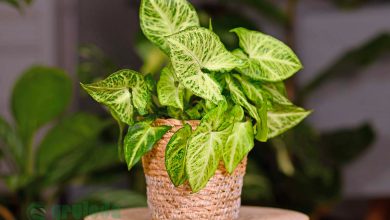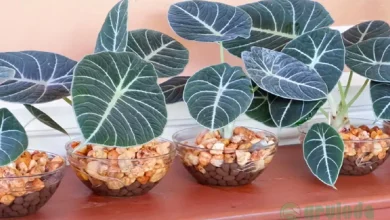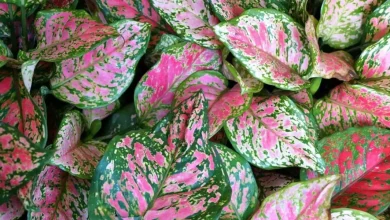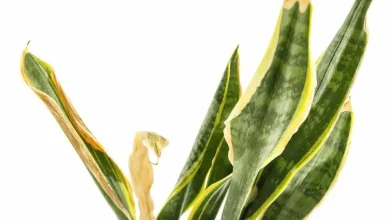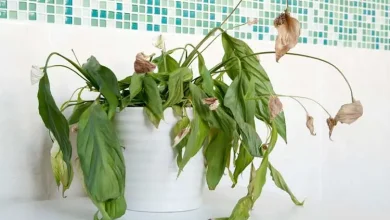Fishbone Cactus Care: How to Grow Epicactis Indoors
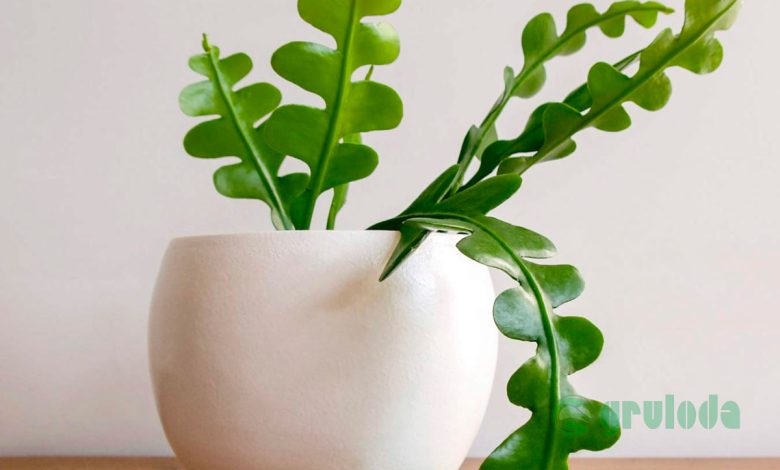
Introduction to Growing Fishbone Cactus
With its skeletal segmented stems and exotic zig-zag shape, Fishbone Cactus makes a uniquely sculptural houseplant. This easygoing succulent thrives with minimal care, lending a desert vibe anywhere it grows. Read on to learn how to care for your Epicactis properly and enjoy its quirky trailing stems for years to come!
Overview of Fishbone Cactus
Fishbone Cactus goes by the botanical name of Epicactis and belongs to the extensive Cactaceae family. Native to South America, its species name is Epiphyllum anguliger. This trailing succulent is also called Devil’s Backbone and is close cousins with orchid cactus.
The plant is named for its zig-zagging leafless green stems that resemble the spine of a fish. As it matures, Fishbone Cactus can reach 3-4 feet long and sends out numerous arching, segmented branches. Small white flowers may bloom in summer but aren’t very noteworthy.
This low maintenance plant thrives with minimal care and brings a touch of the desert to indoor spaces. Let’s look at how to provide the right conditions for your Fishbone Cactus to flourish!
Natural Habitat & Origins
In the wild, Fishbone Cactus originates from arid forest regions of Bolivia and Brazil in South America. It grows as an epiphytic vine clinging to trees and rocky areas, where its succulent water-storing stems allow it to withstand periods of drought. Replicating its preference for arid conditions makes Fishbone Cactus an easy houseplant.
Providing the Right Growing Conditions
While adaptable, there are a few key needs to meet for your Fishbone Cactus to really thrive:
Fishbone Cactus light requirements
Fishbone Cactus does best in bright indirect sunlight. An east or west facing window is ideal. Some direct morning sun is beneficial but avoid intense southern exposure. Insufficient light leads to weak, leggy growth.
Temperature & Humidity
This plant prefers warm temperatures between 65-80°F during the day and around 60-70°F at night. Average room humidity is fine – these succulents are accustomed to dry air. Avoid excess moisture.
Soil Needs
Use a very fast-draining cacti and succulent soil mix. You can make your own using equal parts potting soil, coarse sand, perlite, and/or pumice. The soil must drain quickly to prevent rotting.
Watering Best Practices
Allow the soil to fully dry out before watering again. Water deeply until it flows from the drainage holes. Then do not water again until the potting mix is completely dry – this may mean watering only every 2-3 weeks. Take care not to overwater.
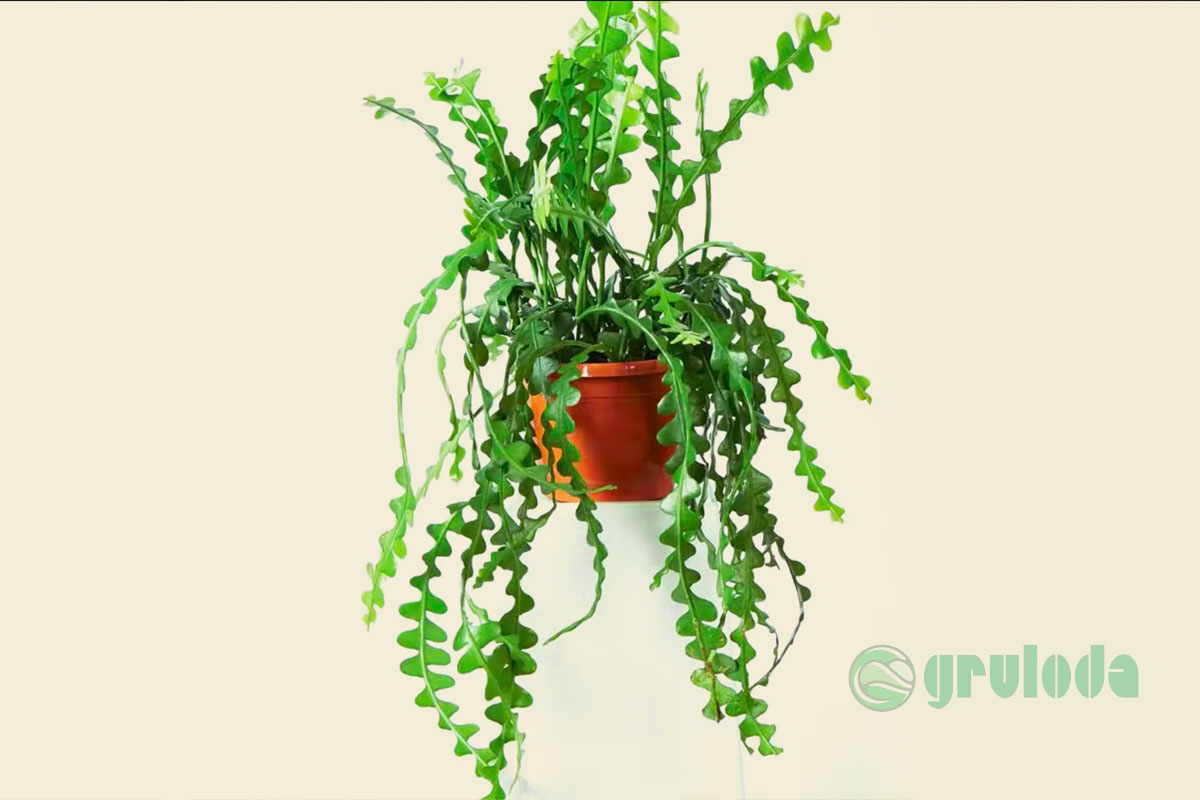
Care for Fishbone Cactus
With the right growing conditions met, a Fishbone Cactus needs minimal care to flourish:
Fishbone Cactus fertilizer
Use a dilute balanced succulent fertilizer to feed every 2-3 weeks in the spring and summer growing season. Do not fertilize in fall and winter months. Never over-fertilize as it can damage sensitive roots.
Fishbone Cactus repotting
Repot in the spring every 2-3 years as needed in a slightly larger container. Use fresh cactus/succulent soil. Handle the trailing stems gently and minimize root disturbance.
Pruning & Shaping
Remove dead or damaged stems to maintain an attractive look. Prune anytime to control size or shape. New offshoots will sprout after pruning. Wear gloves when handling to avoid prickly spines.
Propagating New Plants
Take 3-4 inch stem cuttings in spring or summer. Allow the cut end to dry and callous for a few days before planting in dry soil. Water sparingly. In a few weeks, roots will sprout for new plants!
Encouraging Optimal Growth
Get your Fishbone Cactus to grow its best by providing:
Managing Leggy Growth
Insufficient light causes weak, leggy growth with large gaps between leaf segments. Place in the brightest location possible and prune as needed.
Maximizing Air Circulation
Good airflow is essential to prevent fungal diseases in cacti. Space pots out and avoid overcrowding. Use circulating fans if humidity is high.
Providing Support for Floppy Stems
As stems elongate and get top heavy, provide trellising or stakes to support the fragile segmented growth. Use soft ties to secure stems gently.
Keeping the Plant Clean
Gently wipe dust from leaves using a damp cloth to allow for optimal sunlight absorption. Monitor closely for small pests while cleaning.
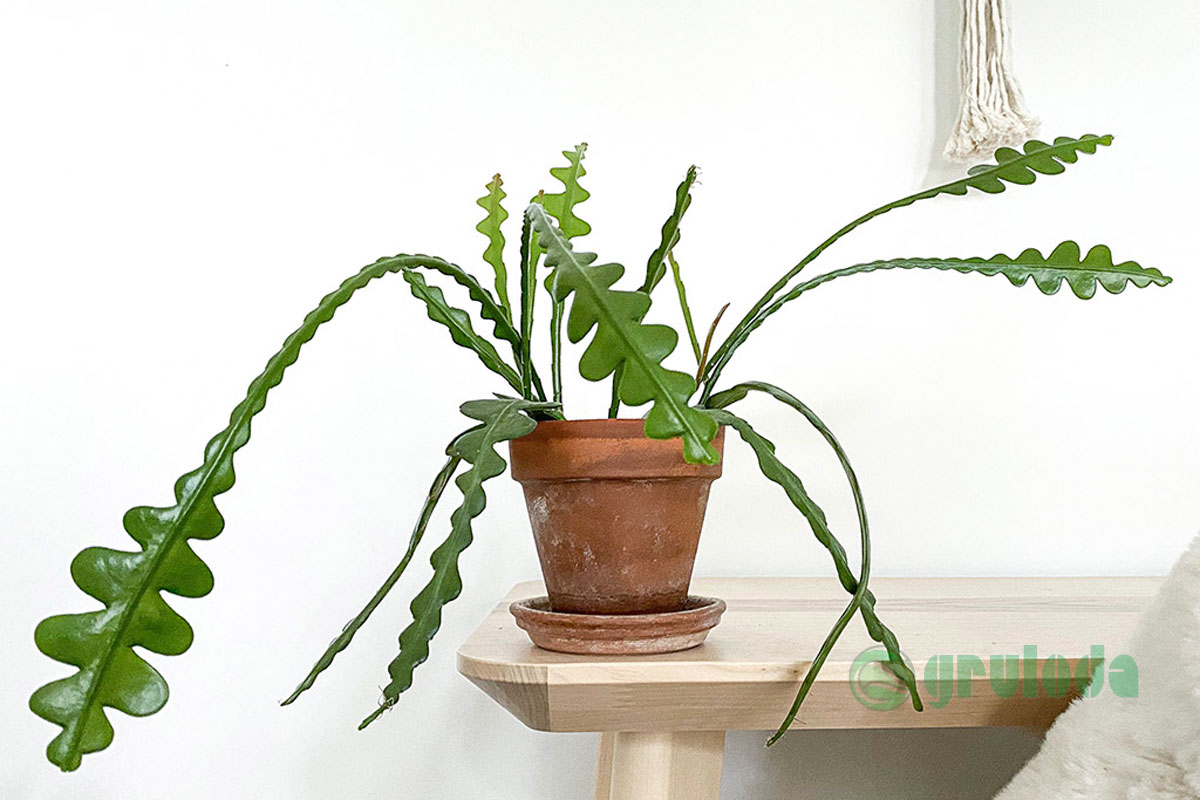
Fishbone Cactus Problems
Watch for these potential problems and take action to resolve them:
Shriveled, Wrinkled Leaves
This signals underwatering. Allow the soil to dry completely between waterings. When watering, soak the soil thoroughly until excess drains from the pot’s bottom.
Rotting Lower Stems
Overwatering causes the lower segments to turn brown and mushy. Allow the soil to dry out further between waterings and discard any rotted bits.
Mealybugs & Other Pests
Check along the stems for small white mealybugs or scale insects. Remove with a cotton swab dipped in alcohol or treat with insecticidal soap.
Lack of New Growth
Inadequate sunlight, overwatering, over-fertilizing or cool temps can prevent new growth. Adjust care, treat any issues, and be patient for new offshoots.
Fishbone Cactus propagation
Here are some tips on propagating new Fishbone Cactus plants:
- Take 3-4 inch stem cuttings from the mother plant in early spring or summer using a clean, sharp knife or scissors.
- Choose segments that are healthy, mature, and free of damage or disease. Cut right above a joint.
- Allow the cut ends to dry out and callous over for 2-3 days before planting to prevent rotting.
- Prepare small pots with well-draining cactus/succulent soil mix. Dampen the soil slightly.
- Plant the segmented cuttings in the pots about 1 inch deep. Gently firm the soil around the stems.
- Water the cuttings very sparingly at first, just to settle the soil. Keep the soil on the dry side to prevent rotting.
- Place the pots in bright, indirect sunlight. Some gentle morning sun is beneficial. Avoid intense midday sun.
- In about 4-6 weeks, new roots should begin growing from the cut segments. Growth will be minimal at first.
- Once established, begin watering more frequently as you would a mature Fishbone Cactus, allowing soil to dry out between thorough waterings.
- Fertilize lightly with a balanced houseplant fertilizer to encourage new growth. Gradually acclimate to more direct sun.
- When the cuttings are well-rooted and growing vigorously, transplant them into a permanent pot.
Propagating Fishbone Cactus from cuttings is easy and rewarding!
Conclusion
With its uniquely zig-zagging skeletal stems, Fishbone Cactus makes a cool addition to modern indoor spaces. Provide this easygoing succulent with plenty of bright light, minimal watering, and sandy fast-draining soil for optimal results. A bit of occasional pruning and pest monitoring is all it takes to enjoy this desert native for many years as a uniquely textured houseplant specimen.
Frequently Asked Questions
How much light does Fishbone Cactus need?
Bright indirect light is essential, whether near an east or west window or supplemented with grow lights. Some direct sun is ok but avoid intense southern exposure.
What type of soil mix should I use for Fishbone Cactus?
Use a very fast draining cactus/succulent soil blend. You can create your own mix with equal parts potting soil, perlite, coarse sand, and/or pumice stone.
How often should Fishbone Cactus be watered?
Allow the soil to fully dry out before watering again, which may mean watering only every 2-3 weeks. When watering, soak the soil completely until excess drains from the pot.
Why are my Fishbone Cactus stems getting long gaps between segments?
Leggy, sparse growth results from insufficient sunlight. Place in the brightest location possible or provide supplemental artificial lighting. Prune back overgrown stems.
How do I propagate new Fishbone Cactus plants?
Take 3-4 inch stem cuttings in spring or summer. Allow to dry for a few days before planting in dry cactus soil. Water sparingly initially. New roots will form in a few weeks!
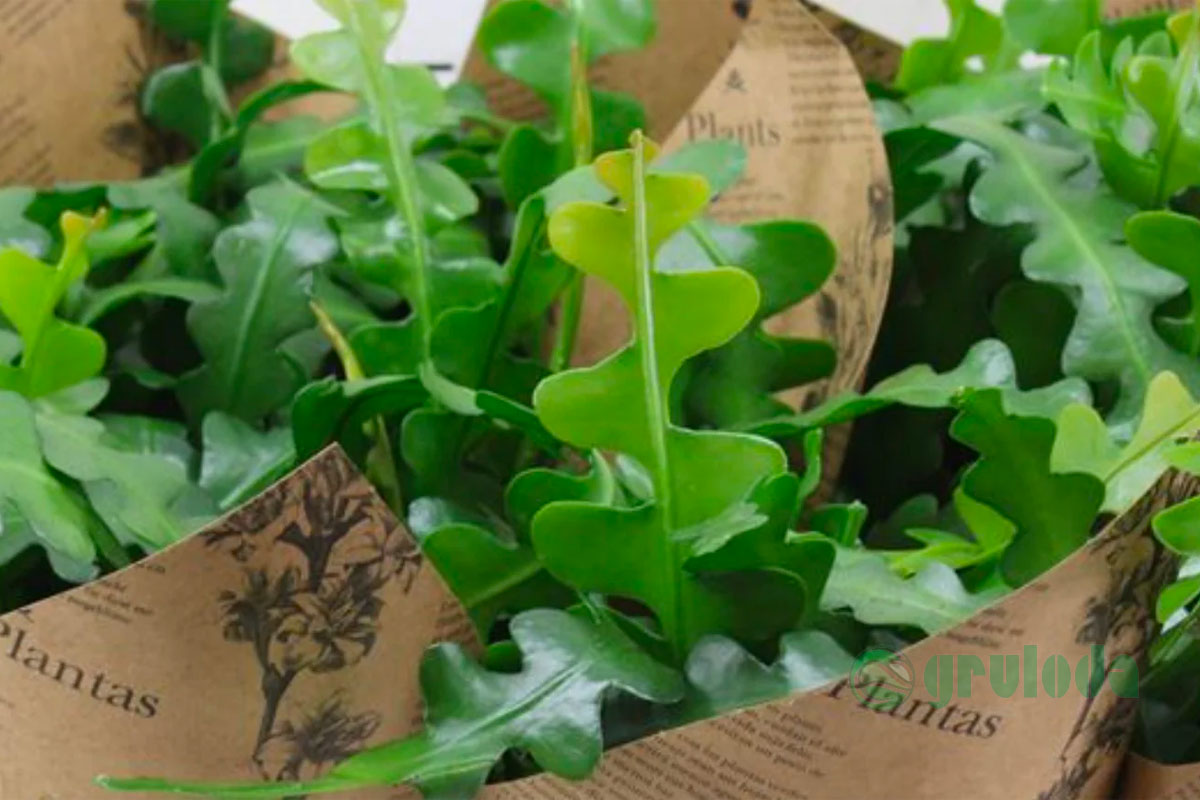
Additional Fishbone Cactus Care Tips
Here are some extra pointers to help your Fishbone Cactus flourish:
- Provide a trellis, pole, or other support for the fragile segmented stems to trail along as they elongate.
- Rotate the pot occasionally to prevent the cactus from growing lopsided or only in one direction towards the light source.
- Prune off any dried out or dead segments promptly to prevent decay from spreading to healthy parts of the plant.
- Wear gloves when handling Fishbone Cactus to protect hands from the tiny spines located along the stems.
- Take stem cuttings frequently to propagate new plants. The more you prune and propagate, the fuller your specimen will become.
- During winter dormancy, reduce watering frequency even further and cease fertilizing until spring. Cooler temps below 50°F can damage the plant.
Troubleshooting Additional Issues
Why is my Fishbone Cactus turning yellow?
Overwatering that leads to root rot will cause yellowing leaves and segments. Allow the soil to dry out thoroughly between waterings to prevent issues.
What causes the segments to turn brown and mushy?
Rotting lower stems result from overwatering or excessive moisture. Discard any rotted bits and hold off watering until the soil becomes completely dry before soaking again.
How can I encourage blooming in my Fishbone Cactus?
Provide plenty of direct sunlight if possible. Allow the plant to become slightly rootbound before repotting. Avoid over-fertilizing, and water a bit more in summer to encourage flowers.
Let me know if you have any other questions about Fishbone Cactus care! Proper conditions keep this unique houseplant healthy.



